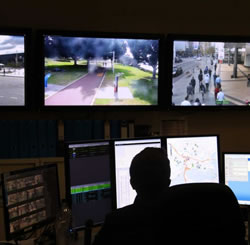 The Acting Commonwealth Ombudsman has called for more powers to consolidate her Office’s oversight of law enforcement Agencies using electronic surveillance.
The Acting Commonwealth Ombudsman has called for more powers to consolidate her Office’s oversight of law enforcement Agencies using electronic surveillance.
Issuing the call in her submission to the Department of Home Affairs’ Reform of Australia’s electronic surveillance framework Discussion Paper, A/Ombudsman, Penny McKay said the current electronic surveillance legislative framework built in fragmentation and inefficiency, consequently impacting on the Ombudsman’s oversight framework.
“Electronic surveillance reform is an opportunity to enhance the assurance the Office provides to Parliament and the Australian community, by strengthening and streamlining our oversight framework,” Ms McKay said.
“The current framework for our oversight of Agencies’ use of covert, intrusive and coercive powers (including electronic surveillance) is scattered across various Acts.”
She said this specific and disparate nature of oversight provisions made it difficult for her Office to prioritise systemic or otherwise significant issues as they arose.
She said it also had difficulty shifting its time and resources away from compliance issues and when helping Agencies identify and mitigate significant risks related to issues that could result in non-compliance.
“Increasingly, we see Agencies conducting large operations using a range of covert and intrusive powers (not limited to electronic surveillance powers),” Ms Mckay said.
“Often, the use of these powers in such operations also spans multiple Agencies in joint operations.
“The current inconsistencies in oversight provisions result in a narrow and siloed approach where we inspect and report on Agencies’ use of different powers separately.”
The A/Ombudsman said that as a result, her Office was generally not able to consider the full operational context in which the powers were being used, thereby limiting its scope to investigate issues and risks across regimes and Agencies.
Ms McKay said an effective framework for Commonwealth Ombudsman oversight would include her Office having oversight responsibility for the compliance of law enforcement Agencies’ use of coercive and covert powers; having the flexibility to take a risk-based approach to its oversight role; and having an oversight model that applied consistently across the range of covert, intrusive and coercive powers.
The A/Ombudsman’s 10-page submission can be accessed at this PS News link and the Department of Home Affairs’ 116-page Discussion Paper at this link.











